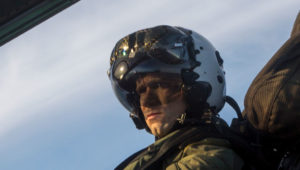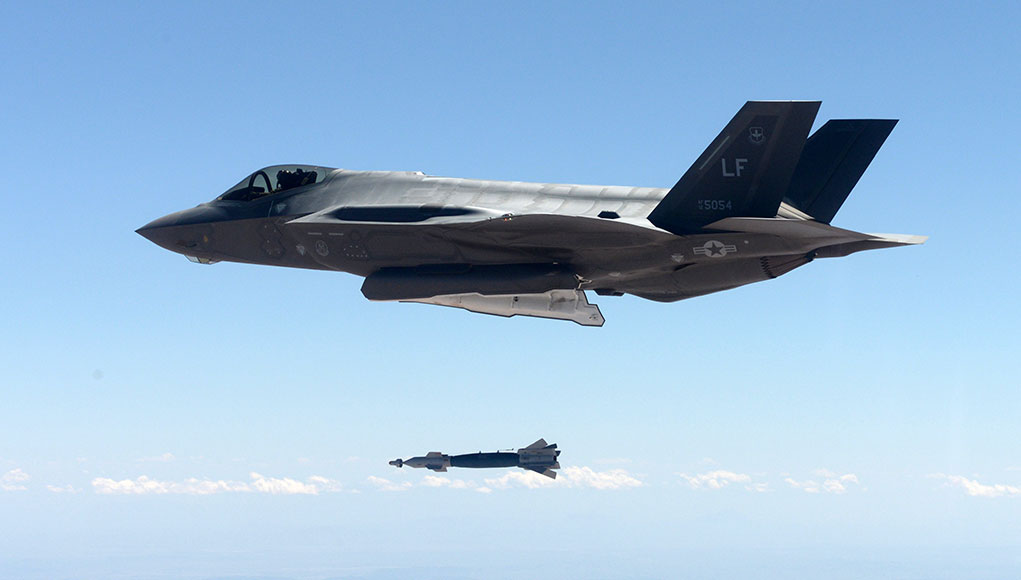Searching for (Targeting) Solutions
Among the serious issues limiting the Block 2B (F-35B) effectiveness in CAS are lack of night vision capability and the need to rely on voice communications too often.
F-35 pilots have encountered problems with the Variable Message Format (VMF) and Link-16 datalink messaging used in the F-35, that randomly dropped information, or used incorrect formatting. Since such error could mean hitting the wrong target or put friendly forces at risk, pilots are required to validate target coordinates phonetically over the radio, rather than using digital CAS – a capability that is common in most legacy CAS aircraft.
Another problem is limited night vision capability. This issue affects mostly the first production batches using second generation (GEN II) helmet mounted displays. From the production Lot 7 aircraft were fielded with the Gen III HMDS, which perform better but pilots report that even this improved version is still less than that of the night vision goggles used in legacy aircraft. The effect makes identification of targets and detecting markers more difficult, if not impossible. They noticed a “green glow” – a condition where light leakage around the edge of the display during low-light conditions makes reading the projected information difficult, particularly during low ambient illumination conditions.

The most significant safety concern of this condition pertains to nighttime carrier operations. Another limitation of Block 2B aircraft (the fielded marine corps variants) is the fact that when they are employed at night in combat, pilots are restricted from using the current limited night vision camera in the Generation II helmet. For this task pilots flying Block 2B aircraft would operate much like early fourth generation aircraft, using cockpit panel displays, with the Distributed Aperture System (DAS) providing limited situational awareness of the horizon, and heads-up display symbology projected on the helmet.
Other issues affecting all F-35 blocks are related to the Electro-Optical Targeting System (EOTS). Generally, pilots assess the EOTS on the F-35 as inferior to those currently on legacy systems.
While EOTS provides visual and thermal imaging and target designation capabilities, of the target, its imaging quality falls behind those provided by current targeting pods in its ability to enable pilots to discern target features and identify targets at tactically useful ranges, along with maintaining target identification and laser designation throughout the attack.
Environmental effects, such as high humidity, often forced pilots to fly closer to the target than desired, in order to discern target features and then engage for weapon employment, much closer than needed with legacy systems, potentially alerting the enemy, exposing the F-35 to threats around the target area or requiring delays to regain adequate spacing to set up an attack. The EOTS is built as an integral part of the aircraft and, due design limitations, there are no significant improvements to EOTS planned for Block 3f. Theoretically, F-35 will be able to use conventional targeting pods such as the Litening and Sniper, but this will compromise their stealth performance.
Lack of target marking capability, traditionally used by the pilot and forward air controller to mark a target using an infrared laser beam is another limitation associated with EOTS. Although the F-35 has a laser designator and rangefinders integrated into the EOTS, this laser is used for the designation of target for laser guided weapons and is not suitable for target marking.

Summary
Many issues reported during the past 12 months raise questions about when the F-35 will achieve full combat capability, since the third software build – 3F is not likely to support all the deficiencies reported during the systems’ development and demonstration phase.
With 200 F-35 aircraft delivered, it would be logical to expect reliability and readiness levels to increase, but the in the past 12 months the mission capability level of the F-35 fleet averaged 52 percent, below the modest goal of 60 percent, ten points below from the 62 percent all-time mark.
Since SDD will continue at least to the middle of 2018, and by then the program will have delivered hundreds of aircraft to the Services in other than the 3f configuration, the depot modification program and its associated concurrency burden will be with the Services for years to come.




















